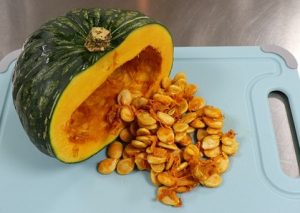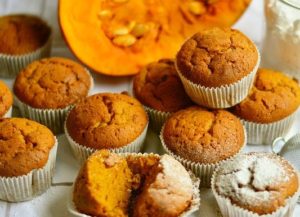 Harvest season is still going strong in many places! October and early November is a great time to shop for fall produce at a local farmer’s market or farm stand. Bringing home pumpkins, squash, cabbage, potatoes and apples from a local farm can be a fun day with your family.
Harvest season is still going strong in many places! October and early November is a great time to shop for fall produce at a local farmer’s market or farm stand. Bringing home pumpkins, squash, cabbage, potatoes and apples from a local farm can be a fun day with your family.
Preserving the Harvest
Try your hand at preserving fresh fall produce. Learning how to preserve food can be a great skill to have. Finding these preserved foods in your freezer or pantry can bring back the tastes of the “Fall Harvest” all year long. Preserving also helps you avoid food spoilage and waste. There are many delicious ways to preserve food, like freezing, dehydrating, pickling, fermenting, and canning.
Tips for Success
The best way to determine which preserving method is right for you is to review safe, tested recipes and directions for your elevation. A great place to find this information is through a website and app called Preserve Smart, developed by Colorado State University Extension. It provides a way to find trusted food preservation recipes and instructions. Just enter your elevation and select the type of produce you want to preserve. Detailed recipes and instructions are immediately available at your fingertips. Following these guidelines will ensure a safe, enjoyable and delicious preservation project that you and your family will be able to enjoy for months to come!
Getting Children Involved
Preserving food is a great way to get your children involved in the kitchen. One of the easiest and most approachable food preservation techniques is freezing food. Everyone in the family can learn how to do it right. With supervision, children can help wash, peel, chop, mash and package fruits and vegetables.
Freezing Pumpkin and Winter Squash 
Prepare Vegetables
- Thoroughly wash pumpkin or winter squash
- Cut into smaller sections and remove seeds
- Cook sections until soft (fork-tender) in boiling water, steam, microwave, pressure cooker or 350-400°F oven (cut side down)
- Remove cooked squash from rind and mash (Spaghetti squash does NOT need to be mashed)
- Cool thoroughly by placing the container with mashed pumpkin or squash in a tub of iced water and stir occasionally to speed the cooling process
Pack (Dry Pack)
- Pack cooled squash tightly into freezer containers or bags
- If using rigid containers, leave 1/2 inch headspace
- If using flexible bags, remove as much air as possible.
- Make sure sealing edges are free of moisture or food and seal
Store
- Label with the name of food, date, and type of pack
- Freeze as quickly as possible to 0°F or below
- For quickest freezing, place containers in single layers in the freezer
- Most frozen vegetables will maintain high quality for 12-18 months at 0°F or below
 Tasty Ways to Use Frozen Pumpkin or Winter Squash
Tasty Ways to Use Frozen Pumpkin or Winter Squash
Pies – Use thawed pumpkin in place of canned in your pumpkin pie recipe.
Baked Goods – Add 2-4 tablespoons of thawed pumpkin or winter squash into the batter of muffins, snack cakes or pancakes.
Smoothies – Try adding a few partially thawed chunks into your next blender smoothie.
Soups and Stews – Pumpkin or winter squash can help thicken a soup or stew and give it a creamy mouth feel without adding fat or dairy.
There so are many tasty ways to enjoy cooked pumpkin or winter squash.
For more information on food preparation and nutrition, visit Food Smart Colorado at https://foodsmartcolorado.colostate.edu/


I love squash and when fall comes this is one of the locally grown produce products that I enjoy
I love pumpkin and squash. I’m going to make that extra effort to freeze some to enjoy through the winter.